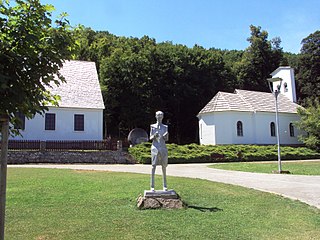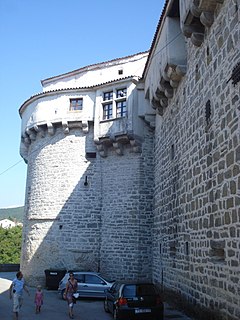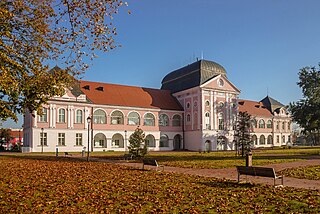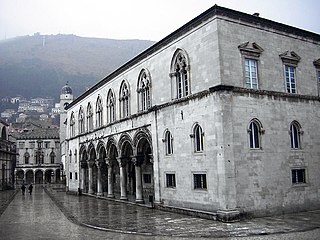 W
WČakovec Castle or Zrinski Castle is a medieval fortification in the middle of the town of Čakovec, the administrative seat of Međimurje County, northern Croatia.
 W
WThe Old Synagogue in Dubrovnik, Croatia is the oldest Sefardic synagogue still in use today in the world and the second oldest synagogue in Europe. It is said to have been established in 1352, but gained legal status in the city in 1408. Owned by the local Jewish community, the main floor still functions as a place of worship for Holy days and special occasions, but is now mainly a city museum which hosts numerous Jewish ritual items and centuries-old artifacts.
 W
WEltz Manor is a Baroque palace in Vukovar, Croatia. The 18th-century manor is the location of the Vukovar City Museum. The manor, as it previously appeared, is depicted on the reverse of the Croatian 20 kuna banknote, issued in 1993 and 2001. The palace was destroyed in 1991 in the Croatian War of Independence. However, after four years of restorations, it was completely restored to its pre-war appearance in October 2011.
 W
WThe Međimurje County Museum in Čakovec, the seat of Međimurje County, Croatia, is located in the Zrinski Castle inner palace, the biggest medieval fortification in the county, close to the centre of the town and its main square.
 W
WMuseum Night is an annual event in Croatia. During one night in the year, the entrance fee to most of the museums in Croatia is waived. Museum Night was first held in December 2005, with only six museums from Zagreb area participating, drawing 10,000 visitors. The event evolved to include museums in the rest of Croatia in the following years, with over 200 museums participating. In 2014, there were 360,000 museum-goers during the Museum Night, with 800 performances held.
 W
WThe Nikola Tesla Memorial Center is a cultural-historical site and museum located in Smiljan, Croatia, located at the birthplace of Nikola Tesla, one of the world's foremost electrical researchers and inventors. It is dedicated to Tesla, who was born in 1856 in his parents' house in Smiljan, then part of the Croatian Military Frontier within the Habsburg Monarchy. The young scientist later left his homeland to work in the United States of America. The Lika Museum in nearby Gospić administers the site.
 W
WOršić Castle is a baroque castle in the Municipality of Gornja Stubica, Krapina-Zagorje County, northwestern Croatia.
 W
WOzalj Castle is a castle in the town of Ozalj, Croatia.
 W
WThe Pazin Castle is a medieval fortification built on a solid rock situated in the middle of the town of Pazin, the administrative seat of Istria County, Croatia. It is the largest and best-preserved castle in that westernmost Croatian county.
 W
WPejačević Manor is located in the Virovitica, which nowadays forms a part of the city centre of the city of Virovitica. It is one of several castles owned by the members of Pejačević noble family in the croatian region of Slavonia.
 W
WThe Rector's Palace is a palace in the city of Dubrovnik that used to serve as the seat of the Rector of the Republic of Ragusa between the 14th century and 1808. It was also the seat of the Minor Council and the state administration. Furthermore, it housed an armoury, the powder magazine, the watch house and a prison.
 W
WThe Sisak Fortress is an early modern lowland fortification built on the bank of the Kupa River before its mouth into the Sava. It is situated in the suburb of modern-day city of Sisak, Sisak-Moslavina County, central Croatia.
 W
WTrakošćan Castle is a castle located in northern Croatia that dates back to the 13th century.
 W
WVeliki Tabor is a castle and museum in northwest Croatia, dating from the middle of 15th century. The castle's present appearance dates back to the 16th century.
 W
WVučedol Culture Museum is a museum of prehistory located at Vučedol, near the city of Vukovar, Croatia. The significance of the site as the eponym of the Vučedol culture makes it an important archaeological park in this part of Europe.